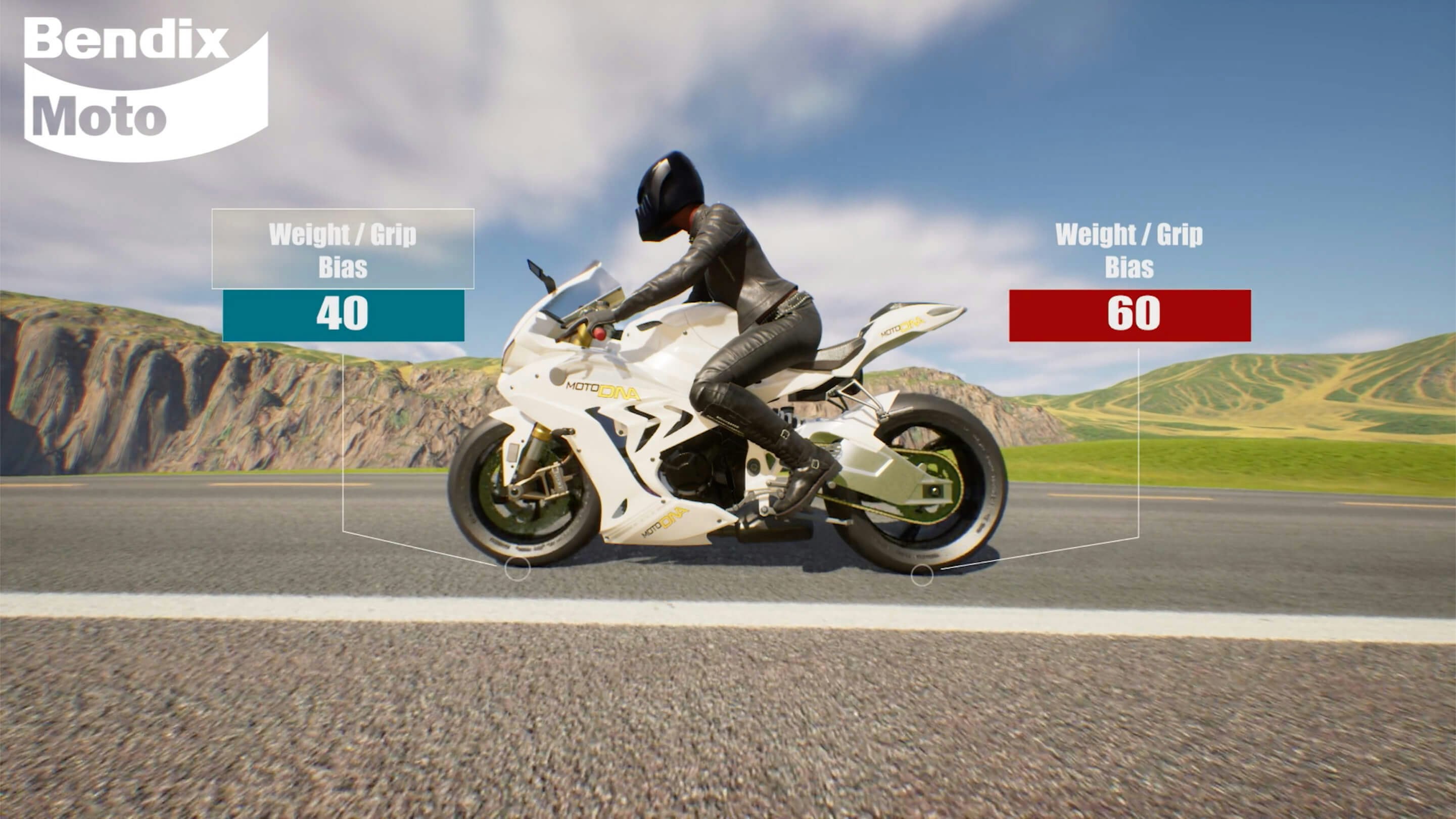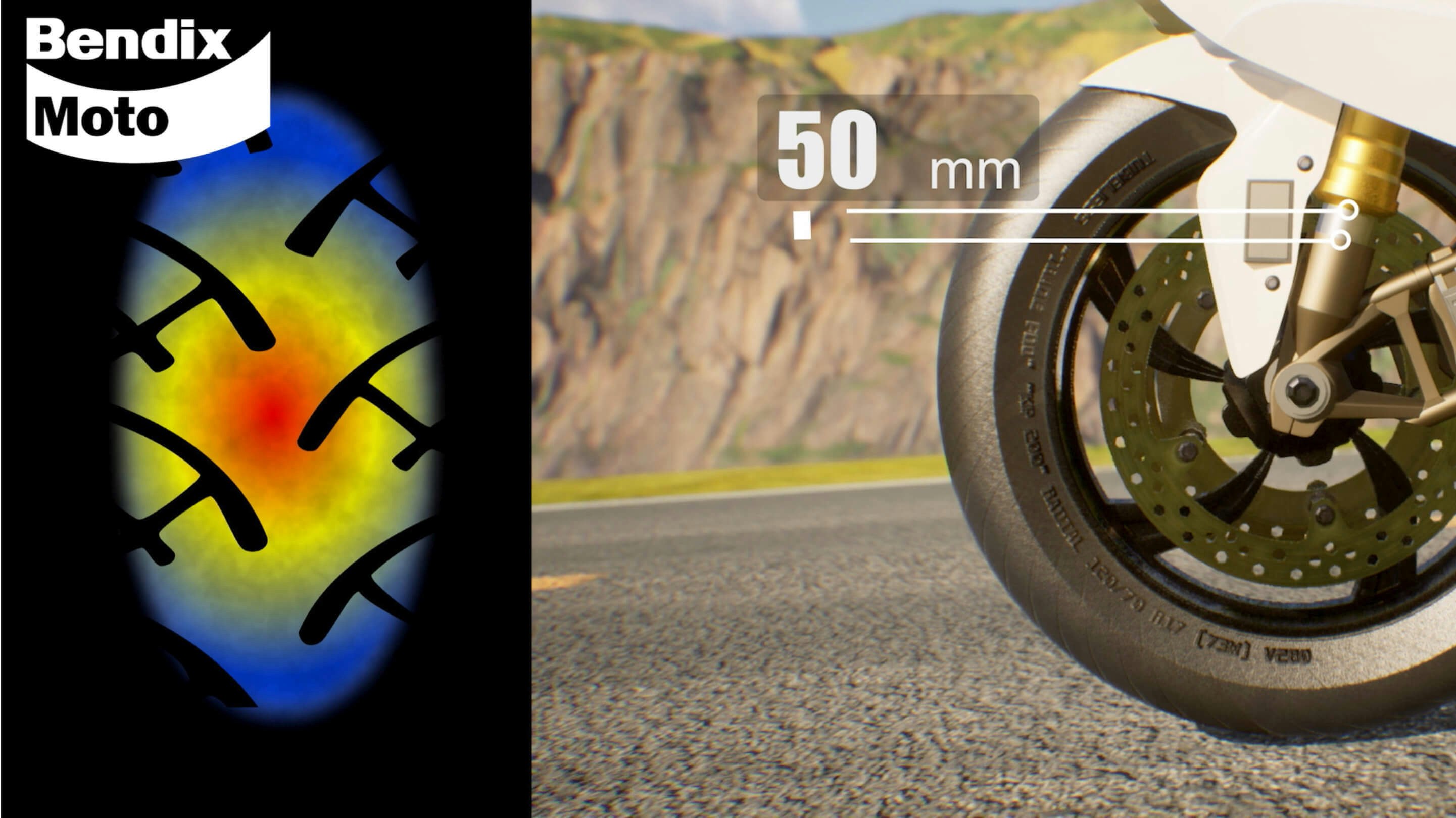Ultimate Trail Braking Street Guide

If you’re an avid rider and follow motorcycle racing, you’ll likely know about ‘trail braking’ – it’s an essential part of any racer’s toolkit, but does it have any value to road riders, and if so, how is this skill best developed?
As a leading manufacturer of quality brake pads for the motorcycle industry, Bendix has partnered with renowned Australian riding school, motoDNA, to develop a series of tutorials to help keep riders safe on the road. Designed to impart the wisdom of motoDNA trainers, the content is the perfect precursor to enrolling in traditional rider training or the innovative Digital Academy, which provides a platform for riders to practice their riding skills at their own pace, in their own time and on their favourite roads.

What is trail braking?
The concept of trail braking involves blending braking and turning simultaneously – front brake pressure is carried while steering into a corner. Then as the rider leans the bike further into the corner, they reduce or trail off that front brake pressure.

As mentioned, trail braking is an essential skill to know and use on the race track, as racers normally trail brake into every corner of every lap and on the limit of traction. But does it hold much value for road riders?
On public roads, motorcyclists obviously ride a lot more conservatively than when racing, and they’ll stay well within the limits of tar grip.
In applying trail braking principles to the road, the common problem that we’re trying to overcome are situations where riders run wide and crashing in corners.
Traditional learner programs teach riders to do most of the braking before the corner: release the brake, lean and then gradually accelerate through the rest of the turn.
This approach is fine for novice or inexperienced riders, as their speeds are relatively slow, so they have more room for error, but as riders gain more experience and competence, their speed increases and that’s where this traditional training habit starts to unravel.

Break down the phases of trail braking
To learn more about trail braking, it’s best to break down the process into separate cornering phases.
On the road riders tend to accelerate up to a speed they feel comfortable with at neutral throttle until a corner approaches. During this phase, tyre grip and steering are neutral with the motorcycle balanced as the rider positions themselves for best vision and corner entry.
As the rider shuts the throttle and enters the initial braking phase, they adjust the bike to an appropriate speed for their skill level, using around 30 per cent of the available brake performance, and slowing down at around 0.4 G.

It’s important to understand that the main contributor to grip is the weight or the load on each tyre. As the rider brakes, the front forks compress – this provides enough force to load the front tyre, increasing its pressure on the road and its subsequent grip.

As the front forks compress, the steering geometry also changes reducing the trail. This reduced steering geometry trail increases the turning performance of the bike, making it more agile.
At this point the rider begins turning into the corner, while gently reducing front brake pressure – but not completely releasing the lever. As the rider is slowing down, it allows the bike to turn on a smaller radius, as the bike – still with forks compressed – wants to turn more tightly.

As the rider enters the middle of the corner, they come smoothly off the brakes and relax the steering input, allowing the bike to roll around the corner on the line the rider sets.
The rider carefully picks up throttle, holding the bike at a neutral throttle. This balances out the bike’s weight distribution, and the front suspension starts to extend again as that load reduces.
Now the bike is back to having equal grip on both tyres and neutral steering, and the rider maintains corner speed until the exit phase.

In the next phase, the rider needs to show some patience before opening the throttle, to keep them from running wide and better allowing the bike to turn.
There should now be good visibility around the corner and the rider should be happy with their speed and direction, so more throttle can be added as the lean angle is removed; then as the bike picks up, the rider steers towards the exit point.
As throttle is added, more radius comes with it and the bike will want to run wide, so riders must remember that more speed equals a greater turning radius for a given lean angle.

As can be seen, brakes are much more than just a deceleration device on a motorcycle, they also control weight transfer and grip as well as steering performance. Trail braking is an advanced skill and should be practiced in a controlled environment until the skill is intuitive before using this technique on the road.
A rider won’t use trail braking in all corners – rolling off the throttle may be enough to have the correct entry speed and give some of the weight transfer benefits discussed.
Having well maintained brakes is important in all riding situations and especially so with advanced braking techniques such as trail braking.
When it comes to motorcycle braking, Bendix is the expert. Learn more about the Bendix Moto brake pad range and the Ultimate+ and Street Road Track product lines. Bendix provides quality pads that are suitable for cruisers, commuters and small / medium trail and touring bikes, as well as large capacity bikes. And there are variants to suit a wide range of Japanese, European, American and Chinese brands – most bikes are covered. The Bendix Moto brake pad selector will help riders select the most appropriate pads for their bike.

Ride safely — Find the right brakes for your bike

 Australia
Australia
 New Zealand
New Zealand
